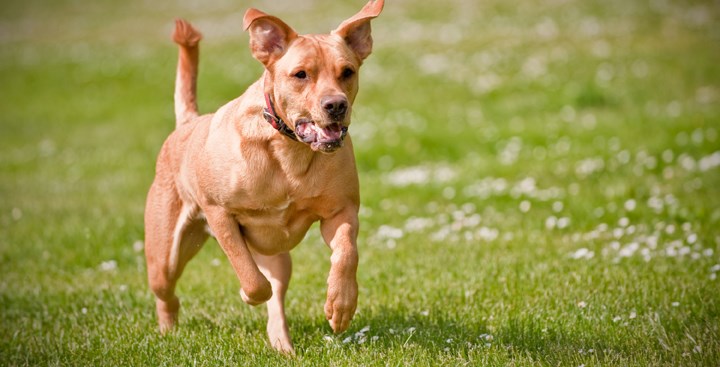A photo came across my K9 Kinship Facebook news feed this morning that made me whisper "wow!" It was a team of four dogs pulling a sled during a sled dog race.
The sport of sled dog racing has been around for eons - that is nothing new. But it was the breed of dog that was pulling the sled through the snow that caught my eye. It was a team of purebred German short-haired pointers (GSPs for short) and it was a beautifully composed image, displaying not only the sport of sled dog racing, but also the incredible physical power and endurance of these amazing dogs. It also captured the sheer joy these dogs were expressing at participating in this physically demanding sport.
It is images like this that capture not only the beauty and strength of a working dog, but the imaginations of people, sparking interest in the GSP and other high-energy breeds such as border collies, cattle dogs, Belgian malinois, huskies or mixes of these breeds. But what the imagination fails to recognize is the level of burning-hot energy these breeds have.
In fact, these breeds can be too much dog for a first-time dog owner. Their high energy can be overwhelming, especially in the city where off-leash areas are limited resulting in short and poor-quality exercise time. When the exercise needs of a high-energy dog are compromised, they become hyperactive and destructive. This can result in owner resentment and the dog being neglected. The lack of quality attention exacerbates the dog's hyperactivity, which creates further alienation between the owner and the dog.
As you can imagine, this does not turn out well for the dog. But it doesn't have to be a sad ending if the owner is willing to make the necessary changes to ensure their dog's mental and physical needs are met on a daily basis to keep the dog emotionally well-balanced.
Having a high-energy dog in the city will require a routine change - well, more like a lifestyle change - for the owner. Sleeping in any day of the week will no longer be an option, but learning to enjoy a brisk 45-to 60-minute walk in the wee hours of the morning, rain or shine, will be. Starting the day with a good energetic walk often satiates the dog's high energy, keeping it in check for most of the day. Once you find the right morning routine, your dog will most likely be happy to sleep the rest of the day away, until dinner time.
About the same time you get home from work and want nothing more than to flop on the couch, your high-energy dog will require its second 30-minute or longer walk of the day. But after that evening walk, it is relaxation time. It is important to set a routine of calm behaviour once the walk is over. This can be achieved by teaching the dog to go to its bed or crate and then giving it a pacifier such as a bone, chew toy or a rubber Kong filled with treats or peanut butter. Some dogs enjoy the "smart toys" that are available at most pet stores.
These pet puzzlers require the dog to use its brain and figure out how to get at the treats placed inside. The goal of a pet pacifier is to help set a routine of calm, peaceful behaviour once the walkies are done for the day. It is not a replacement for quality exercise.
A high-energy dog often requires that its owner step outside of his or her comfort zone and participate in canine-related activities such as agility, nose work or tracking classes, herding classes or, as in the photo I came across, sledding or skijoring. These active dogs excel at having a job, whether it's keeping sheep in order, trailing the location of a scent to its source, or racing along a snow-covered course. They love to work and are happier and calmer as a result of this extracurricular activity.
If you love the idea of having a high-energy dog, you also have to love the idea of changing your lifestyle to help keep your dog mentally, physically and emotionally healthy.
Joan Klucha has been working with dogs for more than 15 years in obedience, tracking and behavioural rehabilitation. Contact her through her website k9kinship.com.



